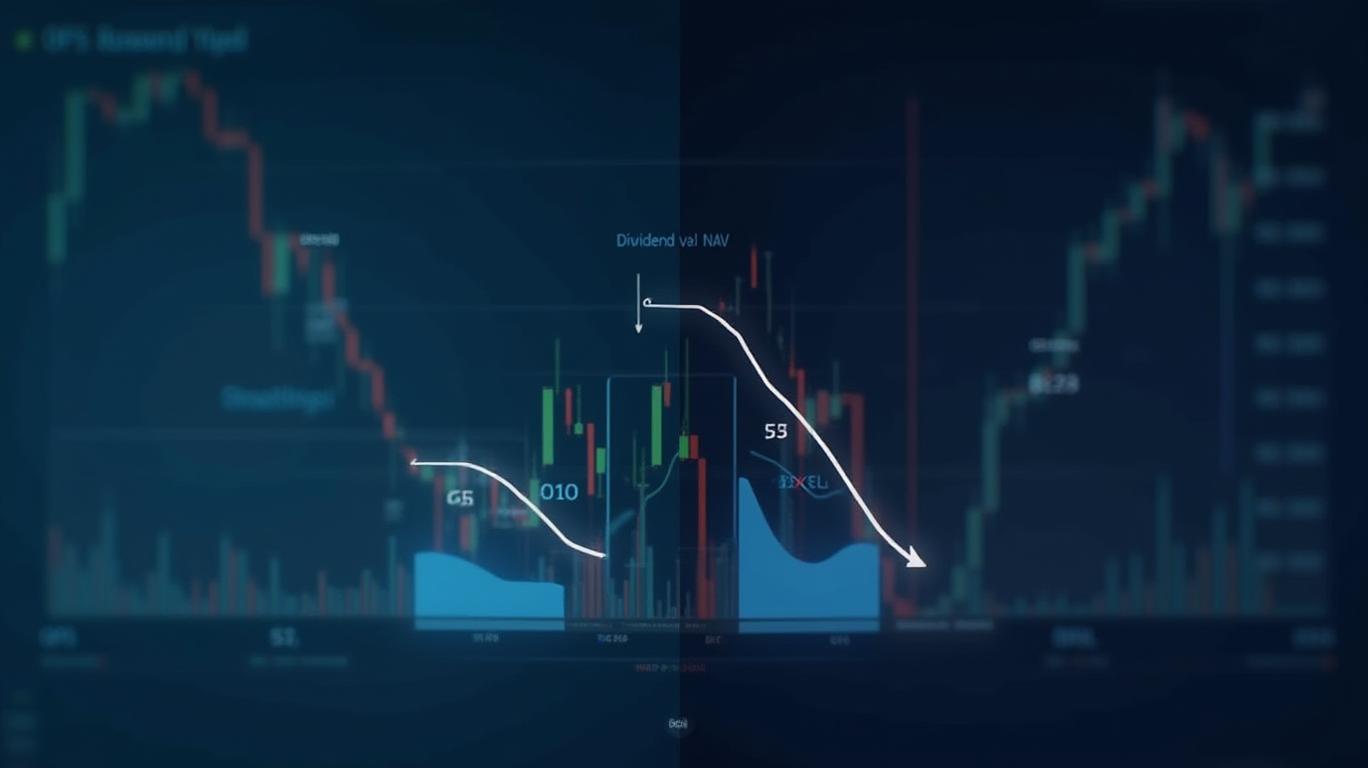OFS Credit Company's Q2 2025: Navigating Yield Volatility with Structured Discipline
In an era of geopolitical strife, Fed uncertainty, and banking sector fragility,
(NASDAQ: OCCI) has emerged as a paradoxical beacon of opportunity. Its preliminary Q2 2025 results reveal a company navigating macroeconomic headwinds with a mix of resilience and vulnerability—a dynamic that, when paired with its peer outperformance in select metrics, positions it as a compelling play for income investors willing to tolerate volatility. Let’s dissect the data and its implications.Yield Stability: A Decline with Silver Linings
OFS’s net investment income (NII) per share for Q2 2025 is estimated at $0.19–$0.23, a slight dip from Q1’s $0.23 but still robust relative to its 19.3% annualized distribution rate. The decline stems from rising interest expenses on its $115.9 million term preferred stock, particularly the 7.875% Series F. Yet, this pressure is partially offset by its 13.46% weighted-average effective yield—a figure still outperforming peers like Blackstone Secured Lending (BXSL), which prioritizes lower-yield senior secured debt.

While BXSL’s dividend coverage ratio of 108% is enviable, OFS’s CLO equity focus offers asymmetric upside in a rising rate environment. CLOs, which reprice quarterly, benefit from steeper yield curves—a tailwind peers in fixed-rate senior debt lack. Investors should note that OFS’s Core NII (excluding CLO volatility) dropped to $0.34 in Q1 from $0.57—a red flag—but this reflects one-time CLO waterfall payment timing rather than structural underperformance.
Credit Losses: Unrealized vs. Realized Risk
The company’s $1.1 million unrealized loss on CLO equity in Q1 2025 highlights market volatility, not defaults. Crucially, OFS has avoided non-accrual loans or write-downs, a stark contrast to legacy BDCs with exposure to distressed real estate. Its portfolio’s 85.1% fair value-to-amortized cost ratio may seem weak, but it aligns with broader CLO market markdowns—a temporary effect of rising rates rather than credit deterioration.
Peers like BXSL, with 98.2% in first-lien debt, boast bulletproof near-term credit metrics. However, their defensive posture comes at the cost of lower yield potential. OFS’s willingness to accept volatility for higher returns may reward investors if CLO equity recovers—a scenario plausible as Fed rate cuts materialize in 2025H2, as widely anticipated.
Capital Efficiency: Leverage, Distributions, and Liquidity
OFS’s $18.3 million ATM offering in Q1 demonstrates liquidity discipline, but its 34.7% leverage ratio (preferred stock to assets) is manageable. The $0.115 monthly distribution remains sustainable even if NII dips, as its $6.12–$6.22 NAV range excludes post-April 30 events. Compare this to peers like Apollo (NYSE: APO) and KKR (NYSE: KKR), which face $25–30 billion in CLO reinvestment risks—a scale that amplifies OFS’s nimble advantage.
The Dividend Reinvestment Plan (DRIP) at 95% of market price further bolsters capital efficiency. While BXSL’s 10.3% dividend yield is less risky, OFS’s 19.3% yield offers a higher risk/reward tradeoff for investors with a 12–18 month horizon.
Why Now? The Catalysts for Income Investors
- Yield Curve Dynamics: A Fed pivot to rate cuts in 2025H2 could boost CLO cash flows, reversing recent markdowns.
- Peer Underperformance: Competitors like BXSL and Apollo face headwinds in fixed-rate portfolios, while OFS’s variable-rate CLOs thrive in volatile environments.
- NAV Floor Potential: The April 30 NAV of $6.12–$6.22 is artificially low due to Q1’s post-debt ceiling crisis volatility. A stabilization in June could trigger a rebound.
Risks and Mitigants
- Interest Rate Sensitivity: OFS’s CLOs are sensitive to Fed policy shifts. Mitigant: Its weighted-average reinvestment period of 3.3 years offers long-term rate insulation.
- Geopolitical Risks: Russia-Ukraine war impacts CLO collateral. Mitigant: Portfolio diversification across 150+ CLOs reduces single-asset exposure.
- Distribution Sustainability: NII must rebound from Q2’s low end. Mitigant: Q3’s Core NII (if reported) could rebound as CLO waterfalls normalize.
Conclusion: A Volatility Play with Income Legs
OFS Credit is not a “safe” BDC. Its NAV volatility and reliance on CLOs are genuine concerns. However, for investors seeking high-yield upside in structured credit—a sector poised to outperform as rates stabilize—OCCI offers a compelling entry at current levels. Pair its 19.3% yield with the $6.22 NAV ceiling and compare it to BXSL’s 10.3% yield with 85% NAV stability, and the choice becomes clear: OFS is the asymmetric bet in a low-yield world.
Action Item: Buy OCCI shares at $6.50–$7.00, with a stop-loss below $5.80. Monitor Q3 Core NII and CLO reinvestment trends for confirmation.

In a market starved for yield, OFS’s preliminary results aren’t just data—they’re a roadmap for income investors daring enough to embrace disciplined risk.

Comments
No comments yet